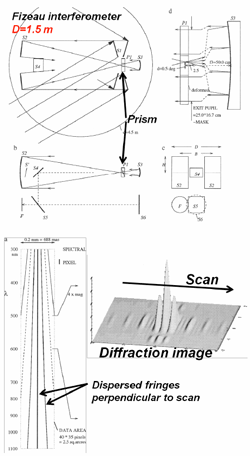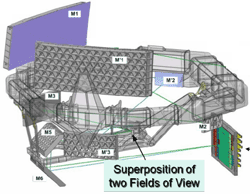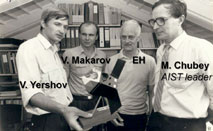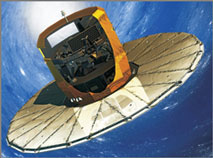The Gaia Mission – a new tiger leap in astrometry
The first astrometric satellite, Hipparcos, and its observations from 1989-93 brought a tiger leap of the accuracy and number of stars with good distances, proper motions and positions. In 2013, ESA launched another large astrometric satellite Gaia, which is bringing a new tiger leap for astrometry.
A proposal for a new astrometric satellite named Roemer was presented by Erik Høg in September 1992. The main new idea in Roemer was to use CCD detectors.
The CCD as a two-dimensional detector with high detection efficiency is better by many orders of magnitude than the photoelectric detector in Hipparcos which measured only one star at a time. This potential advantage of a CCD was trivial by 1990 when Erik Høg's design of a new astrometric mission began, the only question was how to do it with CCDs.

Erik Høg learnt in 1991 from electronics engineer in Copenhagen, Ralph Florentin Nielsen, what a CCD can do.100,000 times higher efficiency
But there was doubt in those years about the use of CCDs for astrometry, for instance their stability was doubted. Therefore various designs were considered, but finally the CCD was placed directly in the focal plane because that would give the highest astrometric efficiency.
The use of many CCDs and the capability to observe thousands of stars simultaneously translates into at least 100,000 times higher astrometric efficiency than Hipparcos had for the same telescope aperture.
Various designs were proposed
The Roemer proposal came in 1992 and the proposal was so realistic and convincing that a development immediately began although everybody was busy with the work for Hipparcos.
In 1993 Swedish astronomer Lennart Lindegren et al. presented a new design called GAIA, based on interferometric telescopes which seemed very promising at the time.
ESA called for proposals in 1993 and a group of people including Erik Høg proposed to study "a large Roemer option and an interferometric option", GAIA.
The interferometric option was studied by industry in 1997, but was abandoned in January 1998 when decision was taken in favour of a large Roemer option. The name GAIA with the capital "I" for interferometry remained, however, until about 2003 when it was changed to Gaia.
Design takes form
The design of optics and detection from 1998 underwent great changes. The satellite had to be decreased and weight and cost problems had to be solved.

There are two telescopes of 1.45 x 0.50 m2 apertures and only one focal plane of 0.7 x 0.7 degrees holding 106 large-format CCDs, performing: star detection, astrometry, photometry and spectrometry. The beams from the two primary mirrors are separated by a ‘basic angle' of 106.5 degrees and are brought together by a beam combiner placed at the intermediate focus. All mirrors and the entire mounting are made of silicon carbide which has zero thermal expansion and thus ensures great stability. The contractor is EADS-Astrium, in fact the same firm with basis in Toulouse which was contractor for Hipparcos and for the interferometric design of 1997.
The final design of 2005 was very much simpler and fitting the ESA cost envelope, which was in fact the same as for the Hipparcos mission when transferred to the same economic situation.
There are two telescopes of 1.45 x 0.50 m2 apertures and a focal plane of 0.7 x 0.7 degrees holding 106 large-format CCDs, performing: star detection, astrometry, photometry and spectrometry. The penalty for astrometry has been an increased expected standard error at, e.g., V=15 mag from 11 microarcsec to about 25 which is still within the goal set originally.
The Gaia mission delivers astrometric data of high accuracy, beginning a few years after launch and with final data by 2020. The astrometry will measure all stars on the entire sky to 20th magnitude giving stellar distances, positions and proper motions for astrophysical and all kinds of use. The photometric data for the same one billion stars at 100 epochs during the five, six or perhaps even ten year mission will provide a unique census for study of stellar variability.
A billion stars on the sky
These data will be used in numerous studies of our own and the nearby galaxies in order to understand the formation and the entire evolution of stars and galaxies and the role of the enigmatic dark matter in the universe.
The complete publication

The Gaia Mission - a new tiger leap in astrometry - is an excerpt from the document "Roemer and Gaia," by Erik Høg in 2006.
Read the full description here
New satellite in 2013

The development of astrometry continues after Hipparcos, as ESA is building a new satellite with the name Gaia following principles, which Erik Høg proposed in 1992. Gaia will be launched in 2012 and will be a million times better than Hipparcos.
This torus is three meters in diameter and will support all of the optics for Gaia. The material is silicon carbide (SiC), which has a thermal expansion coefficient of zero.
